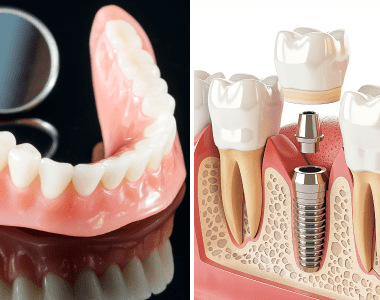
Unlocking Brilliance: The Complete Guide to Teeth Whitening
Introduction:
A captivating smile is often the result of bright, radiant teeth. Teeth whitening, a prominent facet of cosmetic dentistry, serves as the gateway to a confident luminous smile that makes enduring impressions.
Understanding Teeth Whitening:
Teeth whitening, also known as teeth bleaching is a cosmetic dental procedure aimed at lightening teeth shade, reducing stains and discolorations caused by various factors such as food, beverages, tobacco, and aging. It’s a non-invasive process that revitalizes the appearance of teeth.
Types of Teeth Discoloration:
Teeth discoloration can be intrinsic or extrinsic. Intrinsic stains occur within the tooth’s structure, often due to genetics, medications, or trauma. Extrinsic stains occur on the tooth surface and are more responsive to teeth whitening treatments.
Mechanism of Teeth Whitening:
Teeth whitening employs various bleaching agents, primarily hydrogen peroxide or carbamide peroxide, penetrating the enamel to break down stains into smaller less visible particles resulting in a brighter appearance.
Professional vs. Over-the-Counter (OTC) Whitening Options:
Professional teeth whitening treatments, conducted under dental supervision, offer higher concentrations of whitening agents and tailored application methods for more effective and safer results compared to OTC products, which may provide limited outcomes.
Different Techniques of Teeth Whitening:
- In-Office Whitening: This method involves a single session at the dental office, where a higher concentration of whitening gel is applied and activated by special lights or lasers providing immediate noticeable results.
- Take-Home Whitening Kits: Customized trays filled with whitening gel are provided by the dentist for at-home use. The trays allow for consistent application over a longer period, typically a few weeks, gradually enhancing teeth brightness.
- OTC Whitening Products: These include whitening toothpaste, strips, gels, and rinses available without a prescription. While they offer convenience, their efficacy may vary, and they might not address deeper stains effectively.
Factors Affecting Teeth Whitening Results:
The success of teeth whitening treatments is influenced by various factors, including the severity of discoloration, the cause of stains, the individual’s oral health, and compliance with treatment instructions.
Post-Whitening Care:
After undergoing a teeth whitening procedure, maintaining results requires good oral hygiene practices including regular brushing, flossing, avoiding stain-inducing substances, and periodic touch-up treatments as recommended by the dentist.
Safety and Risks Associated with Teeth Whitening:
When conducted under dental supervision, teeth whitening is generally safe. However, potential risks such as tooth sensitivity, gum irritation, or temporary discomfort might occur especially with high concentrations of bleaching agents.
Long-Term Outlook and Expectations:
The longevity of whitening results varies based on individual habits and lifestyle choices. Touch-up treatments or adjustments in habits can prolong the effects, offering enduring brightness.
FAQs on Teeth Whitening:
- Is teeth whitening safe?
- Yes, when performed under dental supervision, teeth whitening is generally safe. It’s essential to follow the dentist’s instructions for optimal results.
- How long does a typical teeth whitening procedure take?
- In-office treatments often take around an hour, providing immediate results. Take-home kits may take a few weeks for noticeable changes, depending on the product and application method.
- Are there any side effects of teeth whitening?
- Some individuals may experience temporary tooth sensitivity or gum irritation, which usually subsides after treatment. Using desensitizing toothpaste can help alleviate sensitivity.
- Can everyone undergo teeth whitening?
- While teeth whitening is generally safe, it may not be suitable for everyone. Individuals with certain dental conditions or pregnant and lactating women should consult their dentist before whitening.
- How long do teeth whitening results last?
- The duration of results varies based on individual habits and maintenance. With good oral hygiene and avoidance of stain-inducing substances, results can last from several months to a few years.
Conclusion: Reveling in the Brilliance of Smiles:
Teeth whitening serves as a gateway to a more confident, vibrant smile. Whether opting for professional treatments or at-home solutions, the key lies in achieving that luminous smile while prioritizing dental health and seeking professional guidance.

 Review Us
Review Us Review Us
Review Us 

